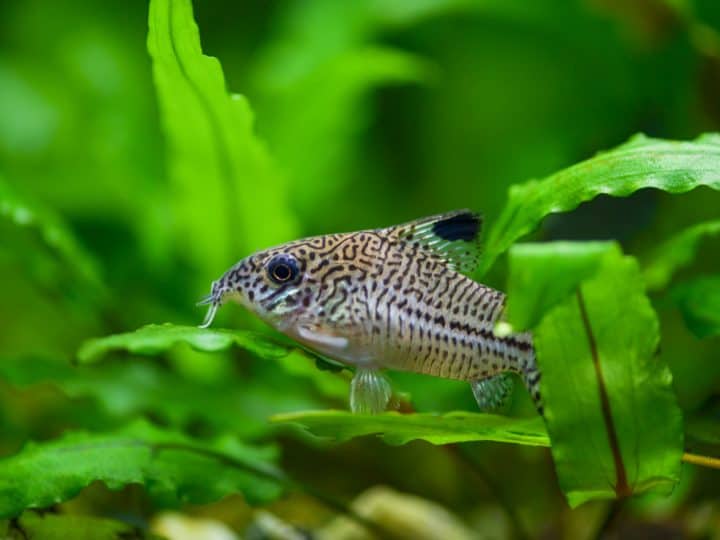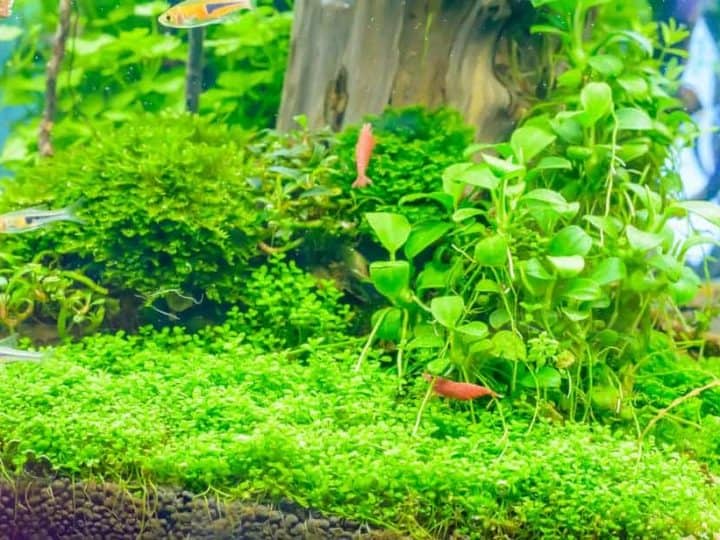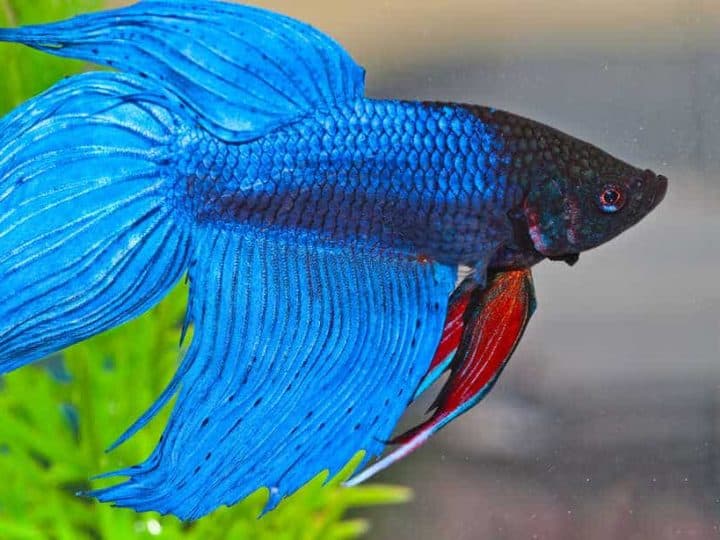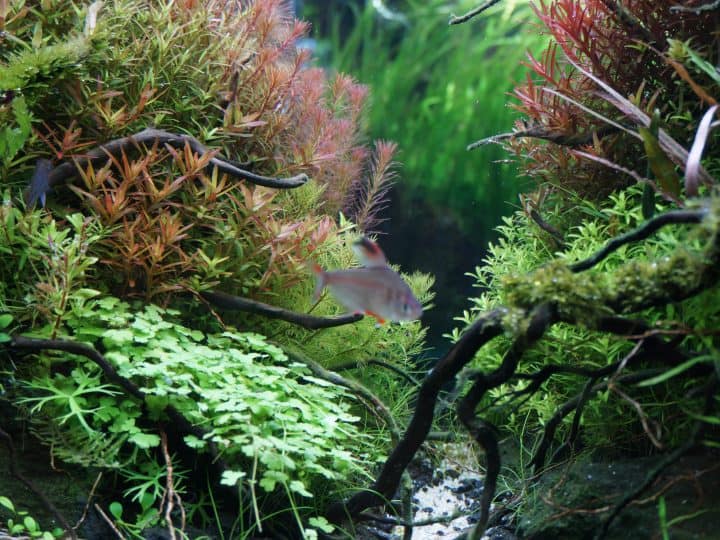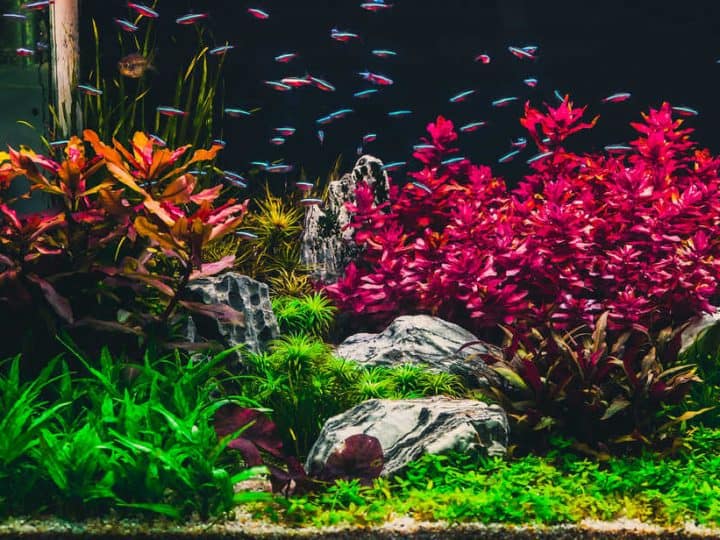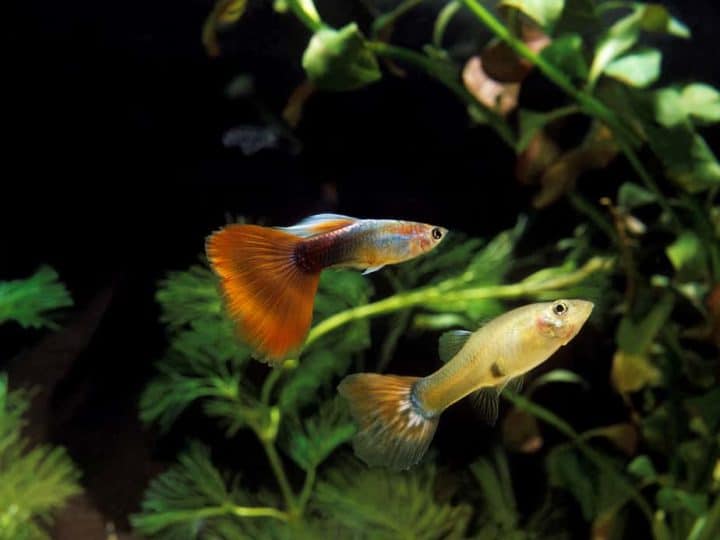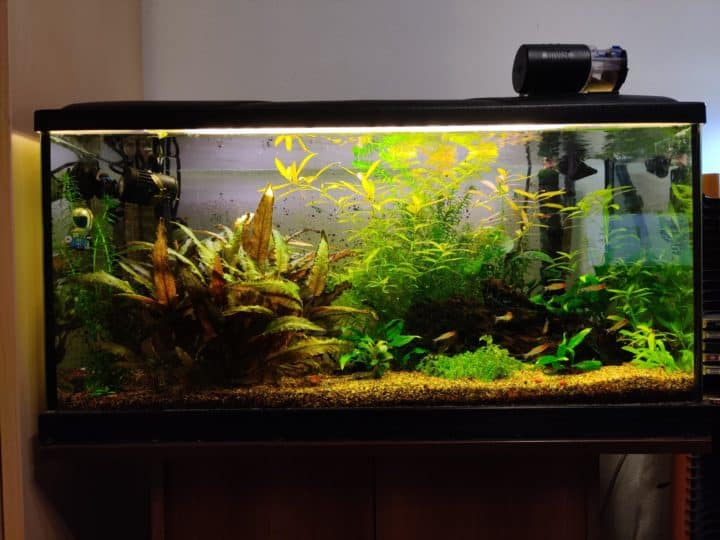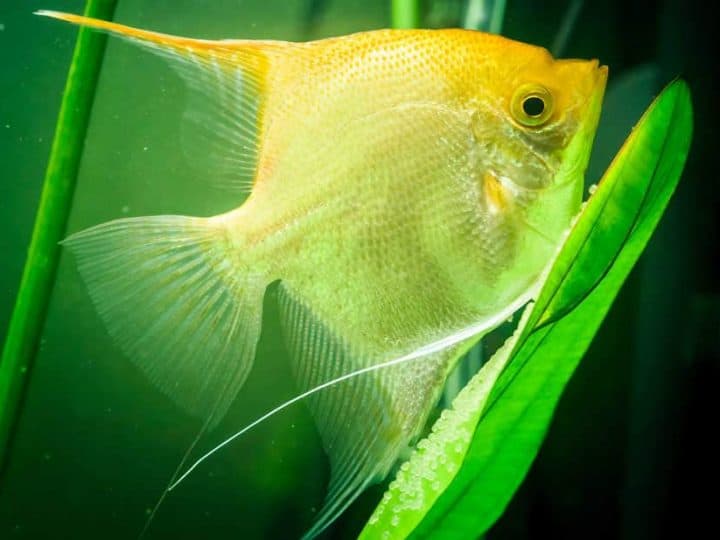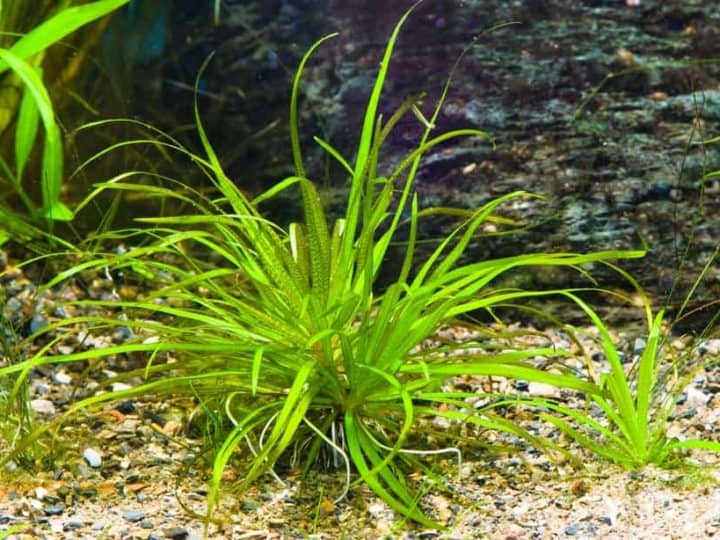Enough oxygen in a tank is essential for healthy fish. Are you looking to add more oxygen to your tank? A good way to do this is by adding plants. On this page, you’ll find 5 AMAZING options to increase oxygen that I’ve used to increase oxygen in all my aquariums.
1. Hornwort
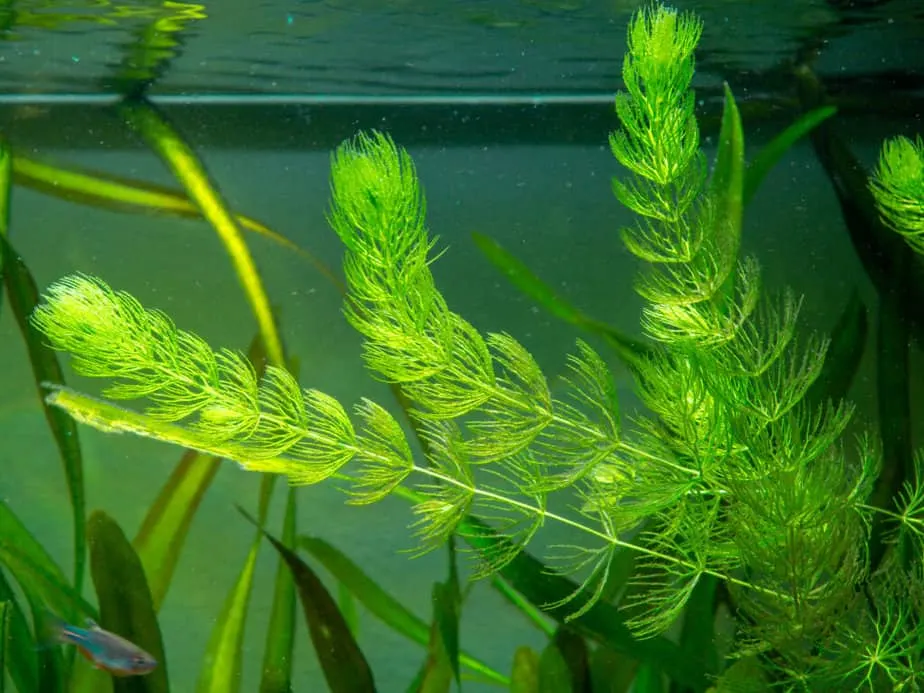
Hornwort is the first oxygenating plant I will introduce to you. Hornwort, also known as coontail, is a robust species that is highly popular in the fish-keeping world. It can survive in a wide range of climates, but I recommend putting it in slightly cooler waters.
Warmer tank water can reduce the level of oxygen in your tank. But if you keep your aquarium water consistently cooler it will hold more of the oxygen the Hornwort produces.
In addition, you will want to root this plant down for the best results. Hornwort can float in the water column. But it will grow taller and produce more oxygen if is held down by substrate and other objects. Also, make sure to give this plant plenty of light. Hornwort will grow strong in higher volumes of light!
2. Eelgrass (Vallisneria)
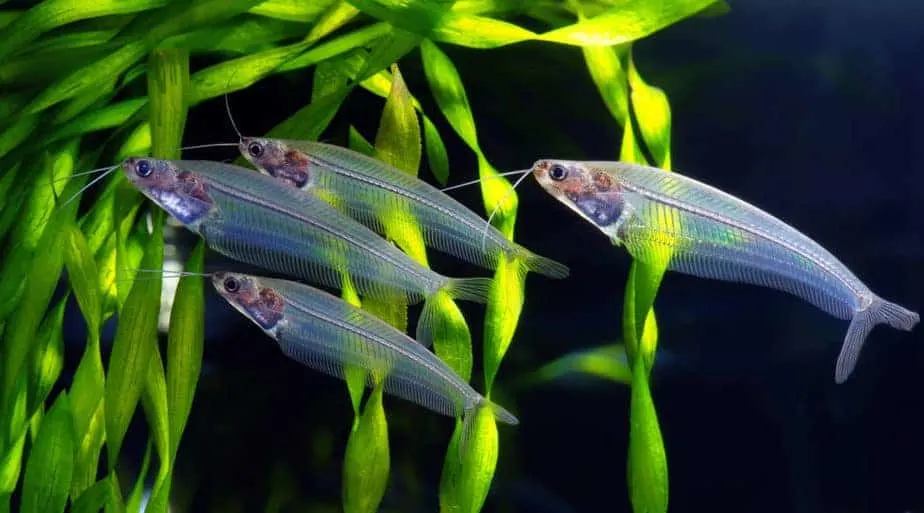
Eelgrass is a more visually attractive oxygenating plant. Its flowing blades propagate easily throughout the space of a tank and bring plenty of oxygen to its environment. It has some of the best oxygenation qualities of any submerged plant. This is due to their large coverage area and long fauna.
You won’t have trouble cultivating this plant either. Eelgrass has low maintenance needs which allow it to grow rapidly in any tank. This is ideal if you want to fill up your aquarium space with oxygenating plants. However, don’t let the growth of these plants get out of hand.
Too much Eelgrass can be a problem. If your whole tank is overtaken by a plant it will have lower levels of oxygen. You want to have a balanced ecosystem so keep this in mind.
3. Green Cabomba

Green Cabomba is another oxygen-producing plant that will increase the breathability of your aquarium. Cabomba is popular in outdoor ponds systems, but can also be used in tanks to up oxygen levels.
Care for this stem plant is a little more difficult though. I wouldn’t recommend this for new tank owners. But if you have some experience with plants the Cabomba can be the perfect backdrop for your fish. They come in a red and purple varieties as well!
In terms of lighting, you should provide medium or high intensity. And you can float or root the Cabomba down. This fauna will grow rapidly in your tank so make sure to trim it as well.
4.Ludwigia Repens
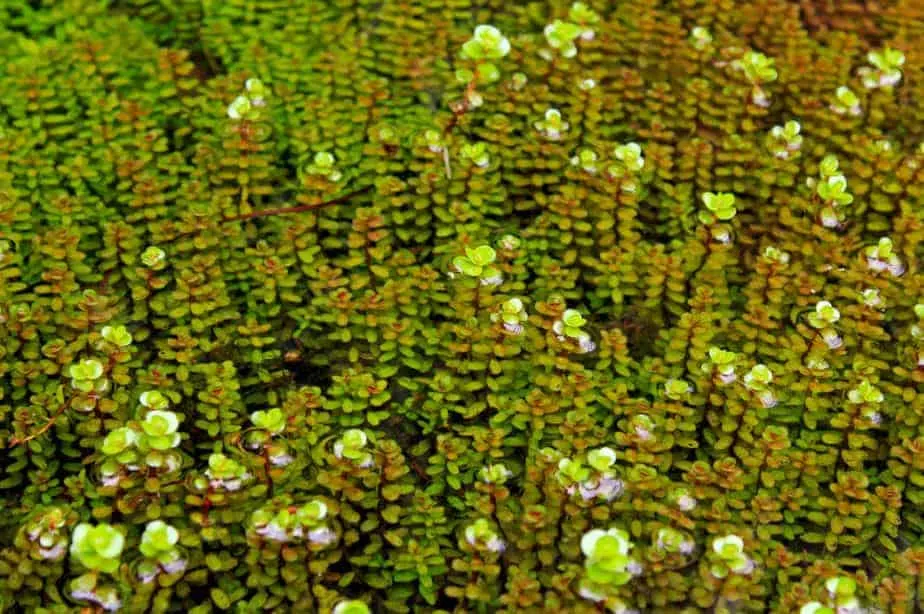
Ludwigia Repens comes in two different varieties. You can get it in green or red hues. The red version of this plant is especially beautiful. It has a deep red color that becomes richer with more light. This plant is also great at providing oxygen for fish and other tank organisms.
It grows fast, so you will see the benefit of this flora as soon as its roots in your aquarium.
Just make sure you give this plant tons of light and give it plenty of fertilizer as well for the best growth outcomes. And water climate should be on the warmer side, around 72 to 82 degrees, at least if you are growing the Red Ludwigia. A Green Ludwigia can be grown in colder climates.
5.Anacharis
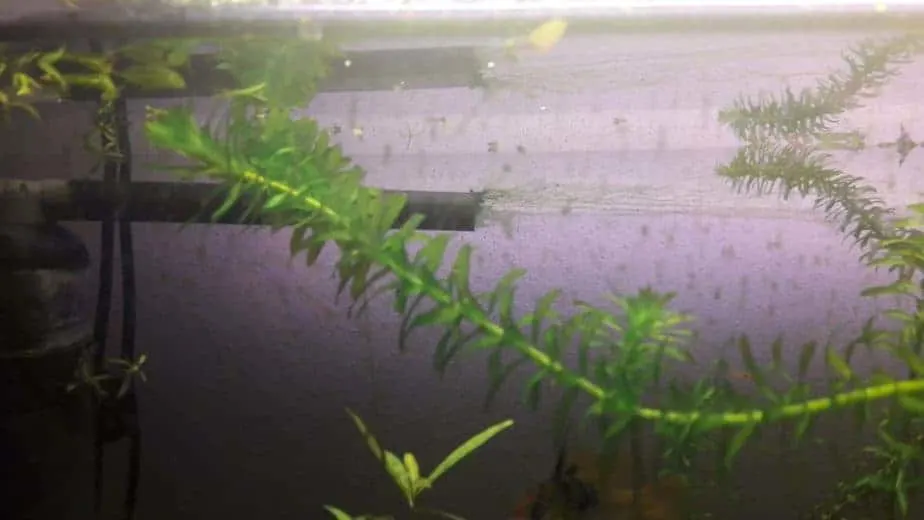
The Anacharis is the last plant I will be talking about. Like all the other plants mentioned, Anacharis will yield large amounts of oxygen for your tank. Anacharis, also known as waterweeds, are lush tall plants that are easy for beginners to grow.
Anacharis grows fast, and create great shaded areas for your pet. You can even grow them in waters as cold as 60 degrees Fahrenheit! This can really help keep oxygen saturation high in your tank.
Rooting this plant is not necessary, but you can make the Anacharis grow even better if you use a substrate. Any type of substrate will work, just add some fertilizer to it to increase the health of your plant. Lastly, don’t forget to give your plant enough light. Anacharis can die if the light intensity is too low!
What Types of Plants Oxygenate Tanks the Best?
On the whole, tank water does not contain as much oxygen as air. Therefore aquatic environments need to have a reliable source of oxygen. All plants produce air, but certain species and plant types are better at this than others.
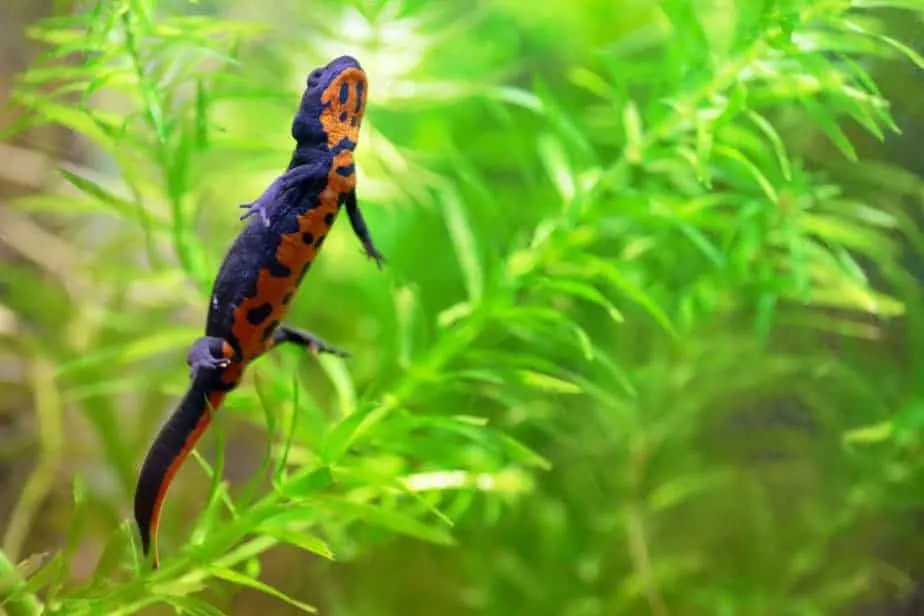
It makes sense that submergible plants offer the best oxygenation for aquariums then. Fully submergible plants generally produce the most oxygen in the water. Unlike plants of the floating variety, submergible greenery is capable of putting oxygen right into the water. In addition, they also absorb high quantities of pollutants, which make it easier for oxygen to permeate in the water.
Dirty and waste-filled waters often suffer from lower oxygen levels. But plants can actually use this waste as fertilizer. They also neutralize any toxic substance in your tank. With submerged plants, these effects are maximized and result in higher oxygen levels.
Tip: in all honesty, surface agitation might be a better way to increase oxygen in your tank. Consider adding a small wavemaker to increase the flow in your aquarium. Aim it at the surface of the tank. Cheap wavemakers are available on Amazon, check them out!
Why Use Plants to Add Oxygen to Your Tank?
Fish need oxygen to survive in their aquarium environment. Still, getting oxygen into your tank has its own complications. Pump systems and other aeration devices are useful, but they can be expensive, bulky, and time-consuming to install.
If you are looking for an inexpensive and natural way to get oxygen directly into your tank, plants offer the perfect solution. Aquarium plants can properly oxygenate aquariums and keep your water in top-conditions. They have amazing filtering qualities which make it easier for oxygen to saturate the water.
In short, underwater flora is great at creating a breathable and healthy habitat for your fish! And with a variety of high yielding oxygenating plants, you can really improve the well-being of your fish and tank. But which aquarium plants produce the most oxygen for aquariums?
Most plants oxygenate the water, but not all of them can keep a tank well oxygenated. You might not have the time to explore plants that produce the most oxygen. So in this article, I will be answering this question for you.
Finding the best plants for your tank isn’t easy, but through this post, I will introduce you to specimens that work with your setup. I’ll discuss some great oxygenating plants in this guide. I’ll also talk about the ways aquatic flora can improve your tank and fish health through oxygenation!
These Plants Produce The Most Oxygen:
- Hornwort
- Eelgrass (Vallisneria)
- Green Cabomba
- Red Ludwigia
- Anacharis
Why Is Oxygenation Important?
Oxygenation is essential for a healthy tank ecosystem. Of course, your fish needs oxygen in its water to breathe. But, other living organisms in your aquarium will not survive without this vital resource.
For instance, plants need to get their fill of oxygen at night. This way they can go through photosynthesis and absorb nutrients in the morning. Beneficial bacteria also require proper oxygenation so that they can replenish themselves and operate within an aquarium. Without a source of oxygen, these bacteria can’t properly break down waste and other contaminants.
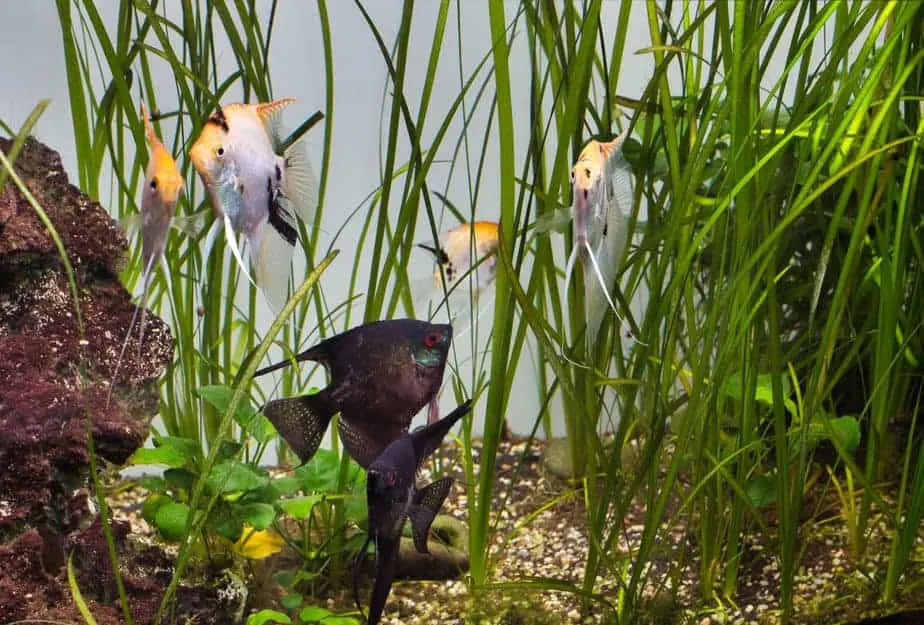
All fish, plants, and other organisms feed off the oxygen available in a tank. In short, oxygen keeps your tank thriving and functional! In the absence of this crucial process of oxygenation. your greenery will wilt and die, beneficial bacteria will fade, and your fish will suffocate.
So how can you keep your tank full of oxygen? As I talked about, there are two main ways to get oxygen in your tank. One is through aeration devices which create surface agitation and produce oxygen bubble. The other way is through plant production. This is the more appealing option.
Not all tanks can survive on plant oxygenation alone, as some plants don’t have the capability to support a whole ecosystem. But if you get plants that produce high volumes of oxygen, you won’t have to worry about this. In fact, I’ll talk about the aerating plants you need to consider in the next portion of the post.
Related Questions:
You might have additional questions about aerating aquarium plants. In this section, I’ll answer some common questions related to this topic.
When you are planting your aquarium, you might wonder what amount of plants is right for your tank. This is a good question as it is possible to overplant your tank with aerating flora. All plants require oxygen of course. At night this is especially true, as plants like to consume oxygen during this time.
If you have too many plants in a tank, they could sap that oxygen from the water and leave your fish gasping for air. You will want to be mindful of this and make sure to control the size and number of plants in a tank. You only want roughly a third of your tank to be inhabited by plant life.
Another related question connects to fertilizer. Tank owners wonder if they should put extra fertilizer to make their plants produce more oxygen. Fertilizer doesn’t directly impact oxygen levels, but if your plant grows bigger and healthier it can produce more oxygen! So if you want to put some extra fertilizer in your planted tank, there is no harm in this!

